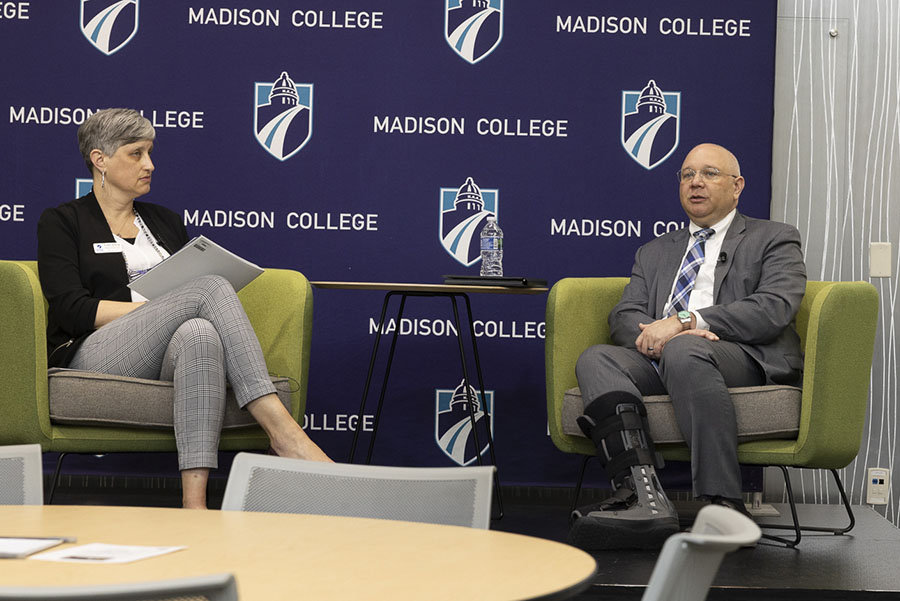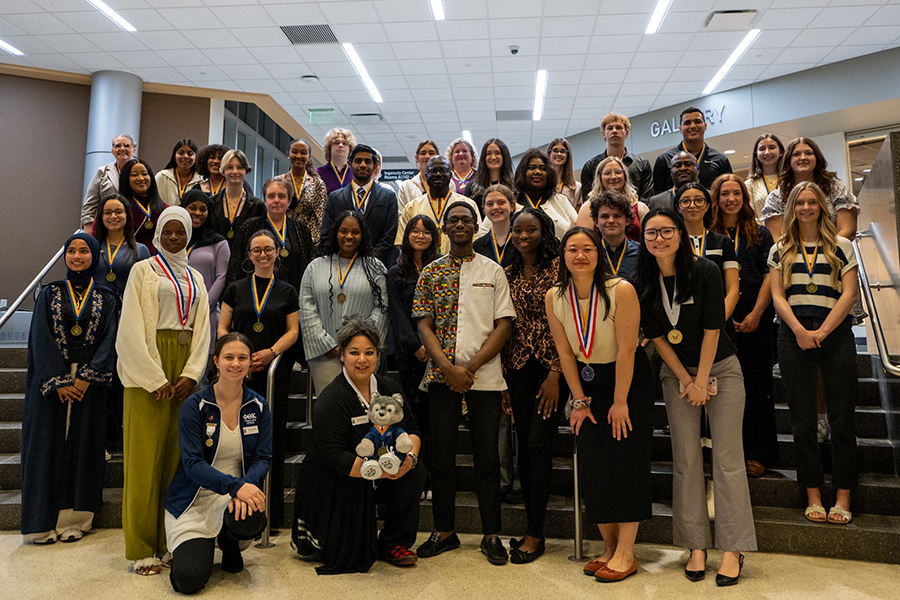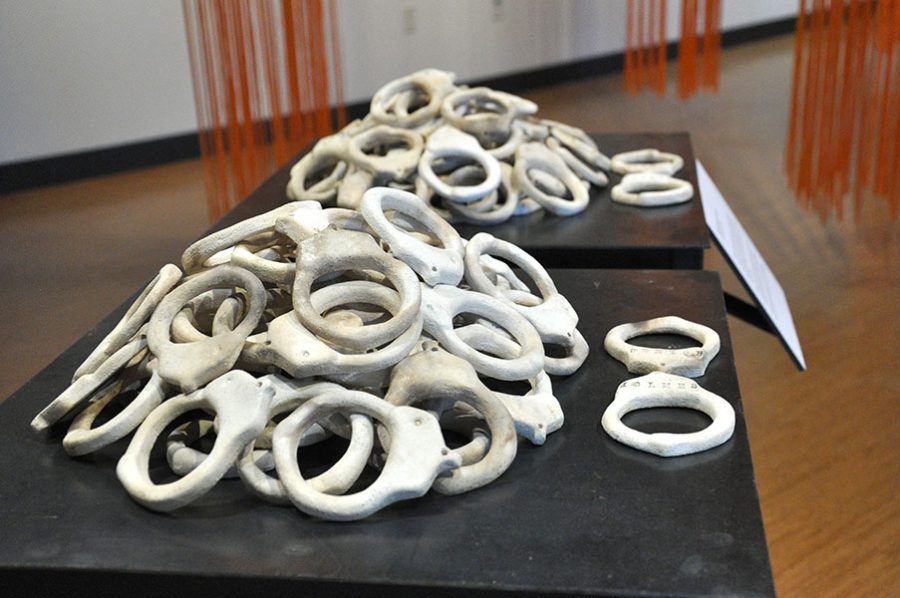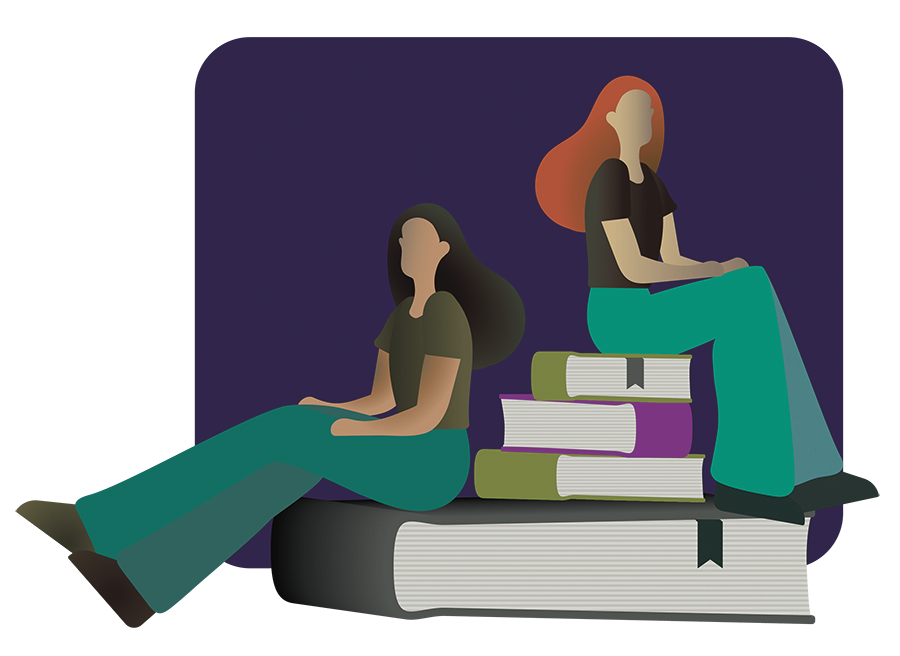Native to Native: Art Activism
Sets of clay cuffs are in Valeria Tatera’s exhibit, “Blood Memories,” on display in the Truax Gallery through Nov. 18.
November 9, 2022
Madison College is hosting a show from an Indigenous activist who uses art as her medium for the majority of November, or as we Indigenous folks call it, Native November. The artist, Valeria Tatera, has an exhibit on erasure of Indigenous people and culture and features two prominent components that are directly designed to address residential schools. The show is called “Blood Memories.”
The first topic during our virtual interview was simply what she wanted to share regarding her youth. She was born in Milwaukee and raised there most of her youth, but not all of it. A major life event occurred when she was five years old, the passing of her Indigenous maternal grandfather. This passing shook her family, as her immediate family did not know they were Indigenous at all. Her mother’s family kept it a secret out of the shame they were forced to feel.
What happened after Valeria’s grandfather passing that let the family know this “secret” was that the U.S. federal courts had found land and an estate in his name that ended up not being initially claimed. The government found them as living relatives and got ahold of them for this purpose. I am shocked that the government did not just seize the land and property from Valeria and her family after her grandfather’s passing. Since it was reservation land, one familiar with the U.S. government’s treatment of Indigenous sovereignty and land rights would likely come to the same disbelief, even more so since this happened over 50 years ago.
Since Valeria’s family treated their Indigenousness as a secret, it is no surprise that she didn’t really begin her journey until she was 18. Her uncle, upon finding out about his Indigenous heritage, went on to join the Red Power movement that was in full swing by that point. They helped overturn the termination policy as well as restore the reservation of my tribe, the Menominee.
Valeria’s uncle has helped her do some family research as well. It was found that the grandfather and his parents were victims of both the Hayward residential school in Wisconsin and the Carlisle residential school in Indiana. The Hayward residential school is deemed a great example of things going in a direction in which they ought not have gone by an inspector, and the Carlisle residential school is notably one of the worst ever in operation here in the U.S. Both are the site of thousands of victims who suffered gross abuse and largely died from their suffering at these “schools.”
It is of note that the Hayward residential school was found to only be barely running off of the funds that were raised from the victims as they were forced to labor for the school. In essence these children were enslaved at the Hayward school. One of the Hayward boys’ dormitories remains as a museum to the nightmare that was inflicted on these children and their communities. Inside there are many artifacts, including photos, of what occurred at this residential school. As for Carlisle, many marked graves still stand to this day.
I asked Valeria about the clay cuffs in her show. I wanted to know why she used them, as these are seldom talked about. In fact, until her exhibit I had never heard about them.
Valeria told me that the clay cuffs she has are to show just what residential schools did to those they labeled “deserters” and property of the schools. They would hunt down the children who were able to break out and run away. While a number of children managed to escape successfully, such as Valeria’s grandfather who was from the Carlisle residential school and her great-grandparents from an unnamed residential school, many, many more did not.
The children that were captured were brought back to the very institutions they escaped from in clay cuffs, if brought back at all.
These children were viewed and treated as inmates and were forced to do labor for the school against their will.
Valeria talked about many things, including feelings of being whitewashed, which was heavily influenced by the Catholic private schools she attended. We also talked about art as a medium of activism and how awful pipelines are. We had to cut off our conversation too quickly and I wasn’t able to talk to her about the Indian Child Welfare Act (ICWA) as much as I would have liked, so we agreed on having another interview to further discuss those topics.
On Wednesday, Nov. 9, the Supreme Court of the United States is going to hear a challenge to ICWA. This is the federal law passed in 1978 in response to Indigenous children being still ripped away from their families for assimilation, just now in the form of being placed into foster care and non-Indigenous, mainly white, families.
These children were, and still are, taken away by non-tribal governmental “authorities” who are unqualified by very nature to deem the way the children are being raised as unfit. It has always been clear that the motive behind these “decisions” against Indigenous parents are due to racist prejudice towards Indigenous way of life. In truth, it is Indigenous culture and society, as it has always been, that they find fault in to justify that Indigenous parents and tribes are declared unfit and take Indigenous children away from their homes and customs.
I hope to have a much longer conversation with her next time, when I am very sadly positive, ICWA will have been wrongfully repealed.
































